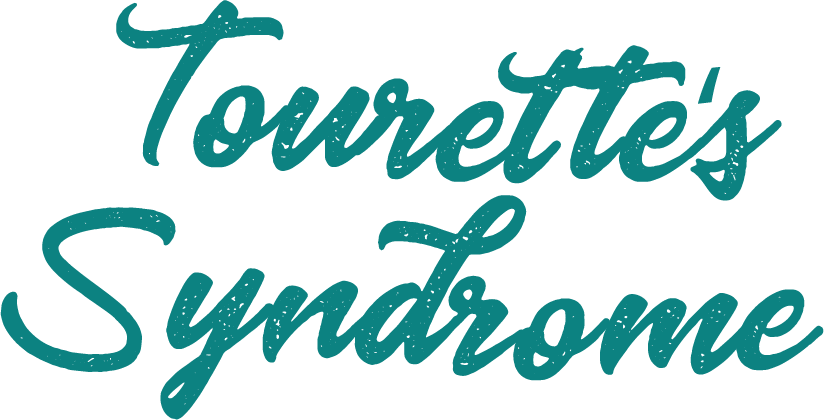Tourette (too-RET) syndrome is a disorder that involves repetitive movements or unwanted sounds (tics) that can’t be easily controlled. For instance, you might repeatedly blink your eyes, shrug your shoulders or blurt out unusual sounds or offensive words.
Tics typically show up between ages 2 and 15, with the average being around 6 years of age. Males are about three to four times more likely than females to develop Tourette syndrome.
Although there’s no cure for Tourette syndrome, treatments are available. Many people with Tourette syndrome don’t need treatment when symptoms aren’t troublesome. Tics often lessen or become controlled after the teen years.
Parrot:
Symbolically the Parrot represents a keen observation of it surrounding, a fact collector, and a colorful beauty. The parrot teaches us to reflect on the power of the inner mind and to gain mastery of your thoughts and spoken word. When dealing with Tourette’s having the parrot on your shoulder will echo your no filter beauty
1. Diverse Species: Parrots belong to the order Psittaciformes and are known for their colorful plumage and distinctive beaks. There are over 393 different species of parrots, ranging from small parakeets to large macaws.
2. Intelligence: Parrots are highly intelligent birds and are known for their ability to mimic human speech. Some species, such as the African Grey Parrot, are particularly adept at learning and reproducing complex sounds and words.
3. Colorful Plumage: One of the most striking features of parrots is their vibrant and diverse plumage. The colors serve various purposes, including attracting mates and camouflaging in their natural habitats.
4. Zygodactyl Feet: Parrots have zygodactyl feet, which means they have two toes facing forward and two toes facing backward. This unique foot structure helps them grip and manipulate objects, making them excellent climbers and manipulators.
5. Long Lifespan: Parrots are known for their relatively long lifespans compared to other birds. Some species can live for several decades, with some reaching up to 80 years or more in captivity.
6. Social Creatures: Parrots are highly social animals and thrive on interaction with their human caregivers or other birds. They form strong bonds with their owners and can suffer from loneliness if left alone for extended periods.
7. Diet: Parrots have a varied diet that includes fruits, seeds, nuts, and vegetation. Some species also eat insects and even small animals. Their strong beaks help them crack open nuts and seeds.
8. Habitats: Parrots inhabit a wide range of environments, from tropical rainforests to arid deserts. They are found on every continent except Antarctica and have adapted to diverse climates and ecosystems.
9. Monogamous Behavior: Many parrot species exhibit monogamous behavior, forming long-lasting pair bonds with a mate. Some species even engage in elaborate courtship rituals to attract a mate.
10. Threats and Conservation: Parrots face various threats in the wild, including habitat loss, illegal pet trade, and climate change. Several parrot species are listed as endangered or critically endangered, emphasizing the need for conservation efforts to protect these unique and charismatic birds
Georges Gilles de la Tourette: Pioneering the Understanding of Tourette’s Syndrome
Introduction
Georges Gilles de la Tourette was a pioneering French neurologist who made significant contributions to the field of neurology in the late 19th and early 20th centuries. He is best known for his comprehensive description of a neurological condition characterized by involuntary movements and vocalizations, which now bears his name: Tourette’s syndrome. This article explores the life and contributions of Georges Gilles de la Tourette, shedding light on his groundbreaking work in the realm of neurology.
Early Life and Education
Born on October 30, 1857, in Saint-Gervais-les-Trois-Clochers, France, Georges Gilles de la Tourette exhibited a keen interest in the medical field from an early age. He pursued his medical studies at the University of Poitiers and later at the Salpêtrière Hospital in Paris, where he trained under some of the most prominent neurologists of his time.
Career and Notable Works
La Tourette’s early career was marked by a series of significant contributions to the field of neurology. His fascination with the complexities of the human nervous system led him to delve deep into the study of various neurological disorders.
In 1884, at the age of 27, La Tourette published a seminal work titled “Etude sur une affection nerveuse caractérisée par de l’incoordination motrice accompagnée d’écholalie et de coprolalie” (Study on a nervous disorder characterized by motor incoordination accompanied by echolalia and coprolalia). This groundbreaking publication laid the foundation for the understanding of what we now know as Tourette’s syndrome.
Tourette’s Syndrome: A Comprehensive Description
La Tourette’s extensive clinical observations and meticulous documentation led to the comprehensive description of a disorder characterized by involuntary tics, including motor tics (such as facial grimaces or shoulder shrugs) and vocal tics (such as involuntary sounds or words). He also identified additional features such as echolalia (repeating the words of others) and coprolalia (involuntary swearing or inappropriate remarks), which are often associated with the syndrome.
La Tourette’s work brought attention to the complexity and variability of this condition, which he recognized as a distinct entity in the spectrum of neurological disorders. His dedication to understanding the nuances of Tourette’s syndrome laid the groundwork for future research in the field.
Legacy and Impact
Georges Gilles de la Tourette’s contributions to the field of neurology continue to be celebrated and revered today. His meticulous observations, detailed documentation, and compassionate approach to patients established a framework for the scientific study of neurological disorders. The eponymous “Tourette’s syndrome” remains a testament to his enduring legacy.
Furthermore, La Tourette’s work inspired subsequent generations of researchers and clinicians to further investigate the underlying mechanisms of the disorder, leading to advancements in diagnosis, treatment, and support for individuals living with Tourette’s syndrome.
Conclusion
Georges Gilles de la Tourette’s pioneering work in the field of neurology, particularly in his comprehensive description of what came to be known as Tourette’s syndrome, stands as a testament to his dedication, compassion, and scientific acumen. His contributions continue to shape our understanding of neurological disorders and have had a profound impact on the lives of individuals affected by Tourette’s syndrome. Through his meticulous observations and groundbreaking research, La Tourette left an indelible mark on the annals of medical history.
Character Information:
- Name:
- Tour the Parrot
- Birthday:
- : October 30
- Place Of Birth:
- France
- Stuffed Animal:
- Frog
- Favorites:
- Color: Teal
Food: Spaghetti
School Subject: Public Speaking
Wants to be when they grow up: Motivation Speaker
- Things they like to collect and do:
- - Likes to collect music boxes
- Likes to do origami
- Loves to do karaoke


